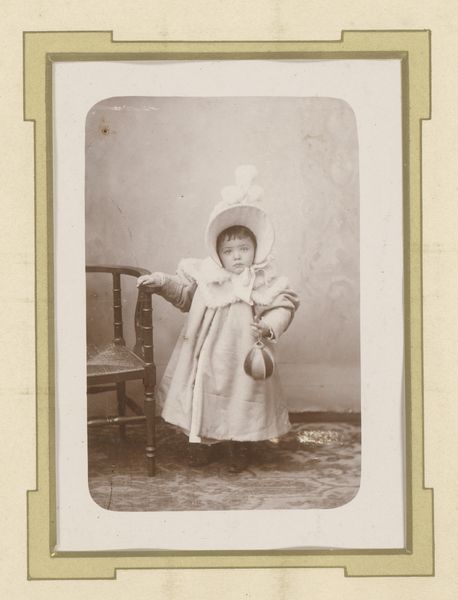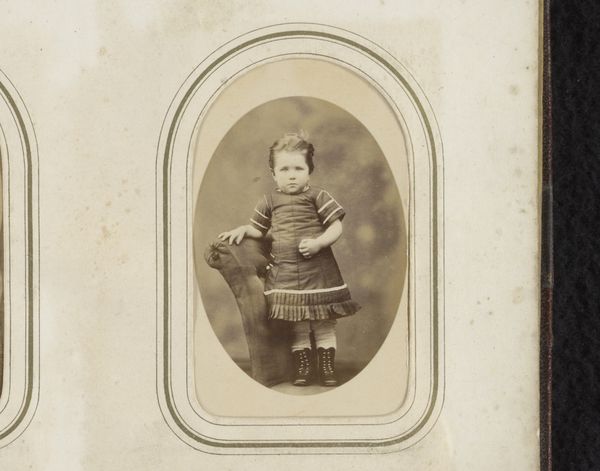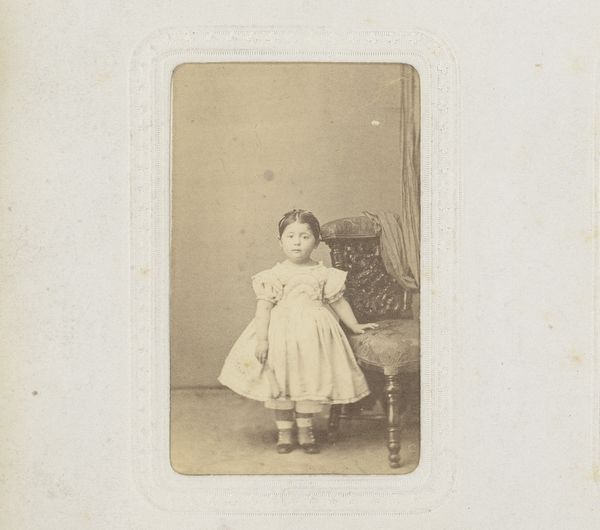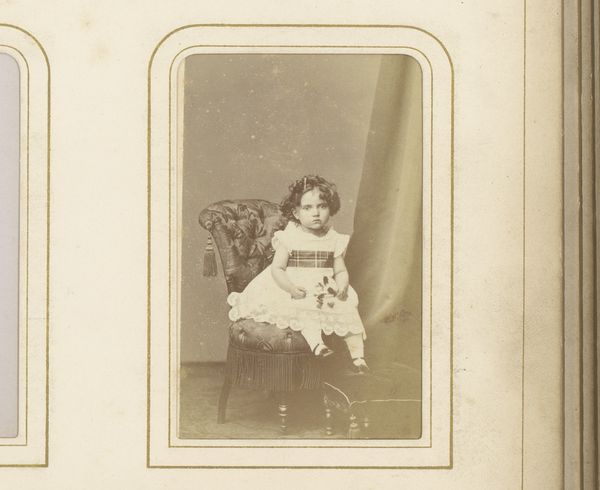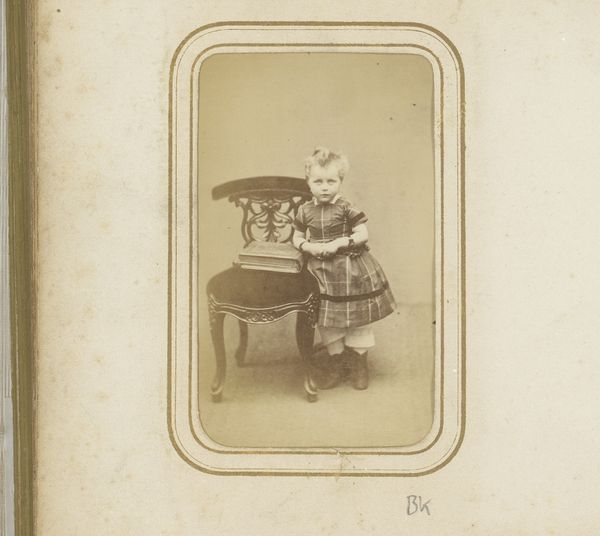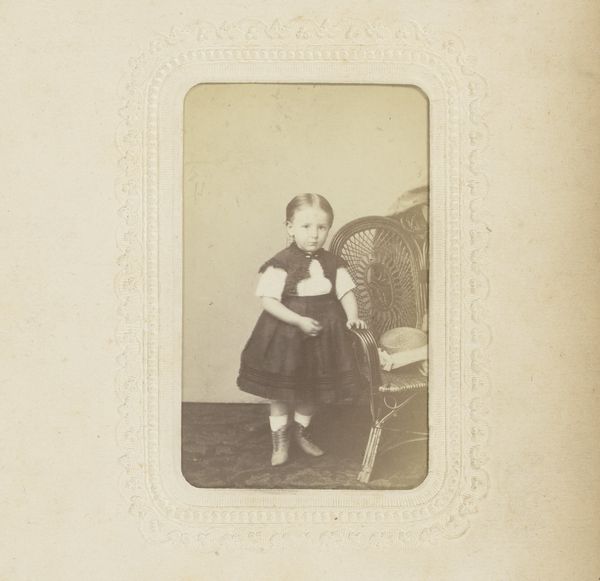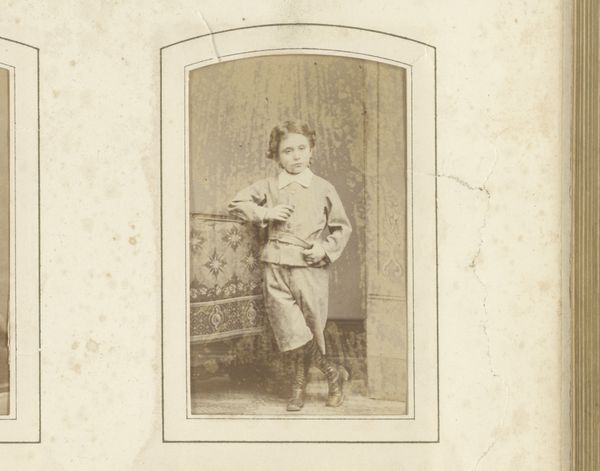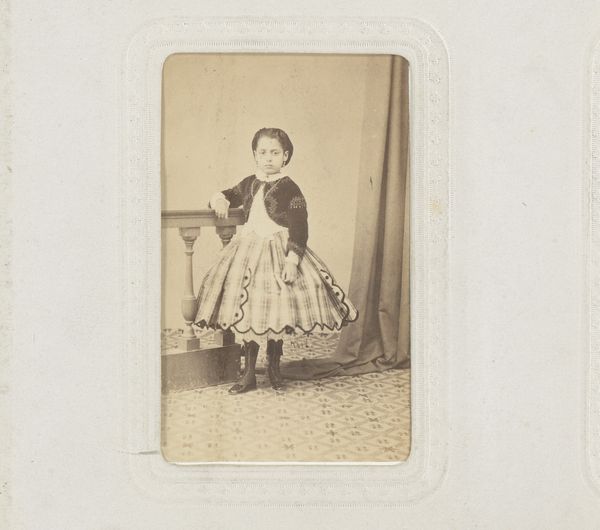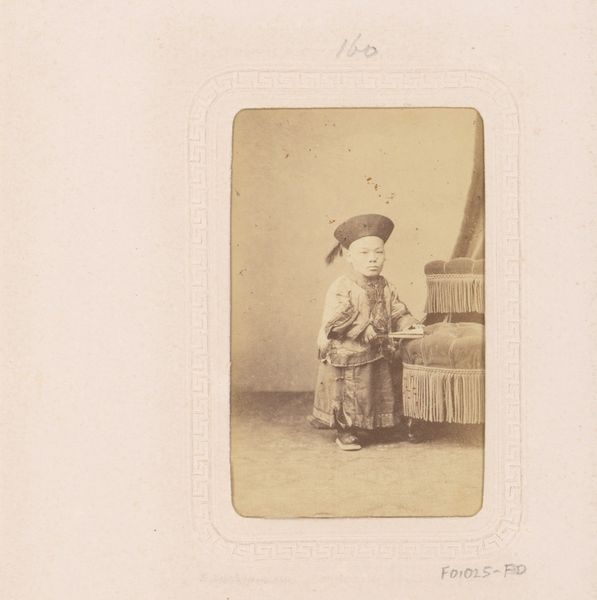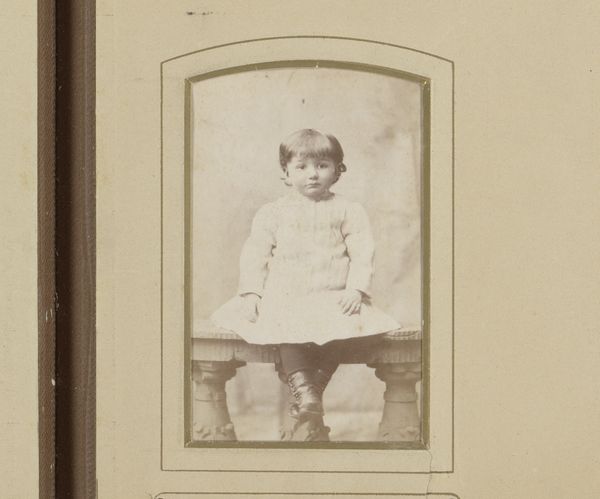
photography, gelatin-silver-print
#
portrait
#
photography
#
historical photography
#
gelatin-silver-print
#
19th century
Dimensions: height 83 mm, width 51 mm
Copyright: Rijks Museum: Open Domain
Curator: This is a gelatin-silver print entitled "Portret van een staand meisje met muts," which roughly translates to “Portrait of a standing girl with a bonnet”. The piece is attributed to Charles Billotte & Cie., and its creation dates between 1860 and 1872. Editor: The immediate feeling it evokes is one of both innocence and a profound sadness, doesn't it? Her eyes seem to carry such a weight for someone so young. Curator: That might reflect the photographic conventions of the period. Such portraits often had a didactic aim: preserving memories but also representing the sitter in what was perceived to be their best light. It also seems to reflect middle-class and bourgeois values about propriety. How to behave for the photographer, to capture status. Editor: And is it typical for children to appear this way, almost as miniature adults? There's such a gravity in the posture, it seems almost like a performance of adulthood in a smaller frame. Curator: Indeed, that 'performance' reveals so much. Look at her clothes. They are styled and meticulously rendered as the typical dress of the bourgeoisie in the mid-19th century. In a way it visualises the role her family had anticipated for her, what behavior was considered appropriate, and in what position she was expected to grow into within society. The dress, then, becomes an instrument for molding. Editor: So it isn't just a record; it's an aspiration, a directive? It speaks volumes about societal pressures placed even on children. Perhaps the sadness I see stems from this lack of youthful playfulness. Curator: Precisely! These studio portraits, so meticulously staged, show a very precise ideal projected onto a child. But they are also records of photography becoming accessible to a new audience of middle class citizens seeking ways to represent and perform their social standing. Editor: It’s compelling how such a simple image reveals a more extensive cultural history. The solemnity, then, is not merely an aesthetic choice but reflects a whole system of values being imprinted. Curator: A powerful example of how a single photographic image can be a complex tapestry of social meaning and photographic history. Editor: Agreed. It reframes how we view the photographic portrait itself—not just as depiction but as a cultural act of production.
Comments
No comments
Be the first to comment and join the conversation on the ultimate creative platform.
